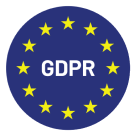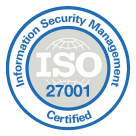Your frontline team’s juggling calls, chats, emails—and mental breakdowns. Costs are up. Coverage is down. You’ve scaled fast, but your ops haven’t. Time to outsource.
Your customers won’t wait. Whether it’s support tickets piling up or missed follow-ups in sales, they expect instant answers and real conversations. But your team? Maxed out. That’s where contact center outsourcing steps in.
As businesses grow, they hit a tipping point. The in-house team can’t keep up, SLAs slip, leads go cold, and service quality suffers. In fact, 32% of customers would stop doing business with a brand they loved after just one bad experience.1
Scaling your operations isn’t just about headcount—it’s about flexibility, coverage, and cost-efficiency. Outsourcing lets you extend support hours, offer multilingual service, and handle volume spikes without burning out your team.
Outsourcing today often goes hand-in-hand with technology upgrades, including AI. By 2025, 85% of customer service leaders plan to explore or pilot conversational GenAI solutions²—yet human agents remain essential.
The smartest approach? Mix in-house expertise with an outsourced contact center to stay flexible, responsive, and customer-first.
This guide breaks down everything you need to know. From benefits and costs to providers and trends. So you can outsource with confidence, not compromise.
Key Takeaways
-
Outsourcing helps teams scale without sacrificing service quality, offering 24/7 coverage, multilingual support, and cost-efficiency—especially when paired with the right tools.
-
Modern contact center outsourcing is powered by tech, not just talent. Smart routing, automation, and AI agents boost speed, consistency, and control.
-
You don’t have to outsource everything—hybrid models let you handle core interactions in-house while offloading overflow, after-hours, or specific channels.
-
The right partner fits your tech, goals, and budget. Look for transparent pricing, CRM compatibility, and service-level alignment from day one.
-
CloudTalk supports outsourced and remote teams with ease, offering seamless integrations, multilingual AI agents, and real-time performance monitoring.
Why Trust CloudTalk?
For nearly 10 years, we’ve been helping more than 30,000 professionals with our solutions. Along the way, we’ve worked closely with experts across customer support, sales, and operations—listening to their challenges and following market trends.
To support better software decisions, we’ve reviewed over 200 software tools across industries. In the process, we’ve analyzed 5,500+ verified customer reviews from platforms like G2, Gartner, Capterra, and TrustRadius, plus real discussions on Reddit and Quora.
In the last year alone, we published over 1,000 articles—each one written by humans for humans, with care and a deep understanding of our customers’ needs. The reviews are based on trustworthy data, with one clear goal: to provide reliable insights and answers for you.
Learn how we keep our content integrity and our software review methodology.
Discover how to scale your contact center without the overhead.

What Is Contact Center Outsourcing?
Contact center outsourcing means hiring an external partner to manage your customer interactions and business communications—such as inbound and outbound calls, emails, live chat, SMS, and even social media messaging.
Contact center outsourcing is often delivered by BPOs—firms that specialize in managing business functions like customer communication and support. It’s not limited to customer support—it can also include sales, appointment setting, market research, or retention campaigns.
-
BPO (Business Process Outsourcing): A broader outsourcing category for non-core functions like HR, IT, or finance.
-
Contact Center Outsourcing: A specific type of BPO focused on customer communication—support, sales, service, and retention.
Depending on your goals and geography, outsourced contact centers may be located onshore (same country), nearshore (neighboring country), or offshore (further away, often for cost efficiency).
How Does Contact Center Outsourcing Work?
Think of it like tapping into a fully operational contact center without the overhead. Instead of building your own team from scratch, you partner with a provider that already has the people, processes, and platforms in place.
You define your needs: coverage hours, languages, KPIs, tools. The provider supplies trained agents, supervision, and performance reporting—integrated into your workflow.
They can use your systems or operate on their own platform that connects with your CRM, ticketing tools, or call analytics software. You maintain control over goals and outcomes—they handle day-to-day execution.
This model is ideal for scaling during peak periods, expanding into new regions, or extending support hours—without hiring internally. It’s fast to activate, cost-effective, and built to improve customer satisfaction.
Modern contact center outsourcing isn’t one-size-fits-all. Some vendors offer basic call support; others deliver AI-powered, omnichannel solutions tailored to specific industries. Whatever your stage or strategy, there’s a model built to fit.
But how exactly does it help your business grow? Let’s break down the key benefits of outsourcing in 2025.
Outsourcing Support? Test it out first, no credit card needed.
6 Key Benefits Of Contact Center Outsourcing In 2025
When internal teams hit a wall on capacity, these six benefits show why contact center outsourcing has become a go-to growth strategy. It’s not just about saving money—it’s about scaling smarter, staying agile, and delivering better experiences.
1. Cost Efficiency Without Compromise
Outsourcing reduces labor and infrastructure costs while maintaining high service standards. With offshore or nearshore partners, businesses can access skilled talent at a lower cost—without sacrificing quality or brand voice.
2. Agility to Scale with Demand
Whether you’re launching a new product or managing seasonal spikes, outsourcing lets you scale up or down quickly. Instead of over-investing in internal hiring, you tap into a ready-to-go team. It’s flexible and fast.
3. 24/7 Global Coverage
Many contact center outsourcing services provide round-the-clock support across languages and time zones. These outsourced contact center services help SMBs to deliver consistent, always-on service, without needing global office locations or rotating shifts.
4. Better Customer Experience (CX)
Trained agents, faster response times, and broader availability mean customers get help when they need it. Outsourcing ensures you meet rising expectations, reduce wait times, and boost satisfaction without overwhelming your in-house team.
5. Higher First-Call Resolution
Well-structured call flows and experienced agents improve resolution rates from the first interaction. Fewer follow-ups = lower costs and happier customers. It also frees up internal teams to focus on strategic tasks.
6. Access to Technology and Talent
With outsourced contact centre solutions, you get AI tools, QA dashboards, analytics, and CRM integrations—without heavy upfront investment. Plus, you tap a diverse global talent pool.
With CloudTalk, for example, managers can monitor live calls, coach remote teams, and track performance in real time.
Boost your first-call resolution
Which Contact‑Center Services Can You Outsource Today?
Outsourcing today goes far beyond answering phones. With modern call center software and virtual team structures, SMBs can delegate a wide range of customer-facing functions—across voice, chat, social, and AI-powered automation.
Here are some of the most commonly outsourced contact center services:
Customer Support (Inbound)
Outsource high-volume support across calls, live chat, email, and social messaging. These services often include ticket resolution, FAQ handling, and escalations. A reliable virtual call center software platform ensures smooth coordination across channels.
Sales & Lead Generation
Outsourced contact center services can include outbound calling, lead qualification, follow-ups, and appointment setting. Providers use CRM-integrated dialers, call scripts, and contact center integration tools to maximize conversion.
Retention & Customer Feedback
Agents can handle win-back campaigns, satisfaction surveys, loyalty follow-ups, and NPS scoring—often via phone, chat, or SMS. This frees your internal team for strategic retention while ensuring a human touch.
After-Hours & Overflow Support
Contact centre outsourcing helps you extend coverage outside business hours or during spikes. Customers get help 24/7—even if your in-house team clocks out. Many providers offer multichannel contact center capabilities.
Multilingual Support
Support customers in their native language with regional teams across time zones. Outsourced contact centre solutions help you scale globally without hiring locally.
Most of these services are delivered through a mix of onshore, nearshore, or offshore teams. Common outsourcing destinations include the Philippines, India, Poland, Mexico, and South Africa—known for skilled talent, multilingual capabilities, and cost efficiency.
Disclaimer: While this article focuses on customer-facing communication, many BPO providers also offer outsourced services for HR, finance, data entry, IT help desks, and more. If you’re looking beyond the contact center, these solutions can support your entire back office too.
How Much Does Call Center Outsourcing Really Cost? Factors to Consider
There’s no flat rate—what you pay depends on where, what, and how you outsource. Some providers bundle software and agents, others separate them. Here’s a simplified breakdown to guide you.
1. Service Complexity & Channels
The more advanced your service needs, the more it costs. Voice support is typically more expensive than chat or email. Multilingual coverage, regulated industries, or tiered escalation can drive up pricing.
Multichannel setups (voice, chat, social, bots) also add to cost—but they’re essential for modern customer journeys. Modern contact center software can streamline multichannel setups, all in one place.
2. Coverage Hours & Volume
24/7 support, weekend coverage, and high call volumes naturally increase rates. But they also reduce the cost of missed opportunities. Many companies use outsourced contact center services to handle overflow and off-hours support without hiring internally.
3. Agent Location & Labor Rates
Agent rates can range widely depending on geography—from $10 to $50+/hour. Here’s a high-level breakdown:
-
Offshore (e.g. Philippines, India): Most cost-efficient, great for scaling quickly.
-
Nearshore (e.g. Mexico, Eastern Europe): Balance of cost and proximity.
-
Onshore (e.g. U.S., UK, DACH): Higher cost, but stronger cultural and language alignment.
While these figures represent general industry benchmarks, many outsourcing vendors allow you to source software and staffing separately. Many businesses prefer to bring their own software into outsourcing partnerships, keeping full visibility, analytics, and control over operations.
4. Technology Stack & Integrations
To avoid unexpected costs or lengthy onboarding, prioritize contact center outsourcing solutions that integrate easily with your existing systems. The easier the fit, the smoother the rollout.
Pricing can vary depending on user seats, call volume, and feature sets. Basic plans may include routing, call recording, and analytics. Advanced setups layer in AI tools, real-time dashboards, contact center integrations, and smart automations.
Top 5 Contact Center Software Platforms for Outsourced Teams
Most contact center outsourcing conversations focus on people—but tech matters just as much. Many SMBs now build their outsourced operations using CCaaS platforms: flexible, cloud-based contact center software that powers remote and external agents alike.
These platforms give you full visibility, smart automation, and integrations to keep outsourced contact center services aligned with your brand experience—no matter where the agents sit.
Here are five top providers powering outsourced contact centres in 2025:
1. CloudTalk
CloudTalk is a cloud-based contact center platform designed for SMBs and scaling teams that want to deliver seamless inbound and outbound communications. Best for businesses in need of multichannel customer interactions.
Pros
-
Fast, no-code setup – Easy to launch and scale for hybrid or distributed teams
-
Smart call routing – Directs calls based on agent skills, time zones, or priorities
-
Real-time dashboards & analytics – Monitor metrics and coach agents in the moment
-
AI tools and automations – Voicemail transcription, call tagging, and sentiment analysis
Cons
-
Doesn’t include agents – You’ll need to hire in-house or partner with a BPO
-
Better suited for SMB – Optimized for SMB and mid-market, not large enterprises
-
Integrations may require setup – Advanced workflows take some configuration
Pricing
CloudTalk has 5 pricing plans on offer, ranging in price from $19 per user/month to $49 per user/month, with a special exception for the custom pricing plan, which lets you tailor your solution to your unique business needs.
2. 3CX
3CX is a communications platform that lets companies manage calls, video, and messaging in one place. Best for organizations with in-house IT teams looking for full control over setup, hosting, and infrastructure.
Pros
-
Flat-rate pricing by call volume – Pay based on simultaneous calls instead of user seats
-
Deployment flexibility – Run it on-premise, in the cloud, or through a partner
-
Advanced PBX features – Includes IVR, call recording, conferencing, and call queues
-
Integration support – Connects with CRMs, Microsoft Teams, and messaging tools
Cons
-
Setup can be technical – Requires IT expertise to install and maintain
-
Hosting and support billed separately – Adds extra complexity and overhead
-
Limited reporting tools – May need add-ons for advanced analytics
-
Omnichannel needs extensions – Non-voice channels may not be native
Pricing
3CX’s pricing is based on simultaneous calls rather than user count, starting from $305 for 4 concurrent calls in the Professional edition and reaching up to $67,920 for enterprise-scale deployments.
3. Cisco Webex Contact Center
A native cloud contact center from Cisco, Webex is built for scalability and enterprise demands. Ideal for larger organizations seeking omnichannel support, advanced AI, and deep customer journey insights.
Pros
-
Enterprise-grade reliability & scale – Supports large deployments with advanced architecture
-
Full omnichannel support – Voice, chat, email, SMS, and social in one unified system
-
AI-powered routing & analytics – Sentiment analysis, WEM tools, and virtual agents
-
Seamless enterprise integrations – Works with major CRMs and the wider Webex suite
Cons
-
Opaque pricing model – Costs depend on scale, features, and user tiers
-
High setup complexity – Often requires consulting and integration support
-
Not ideal for SMBs – Better suited to enterprise-level teams
-
Add-ons can increase total cost – Workforce tools and digital channels often priced separately
Pricing
Webex Contact Center follows a custom-quoted pricing model. While Cisco doesn’t publish exact rates, estimates from analysts suggest historical pricing starts around $150 per agent/month.
4. RingCentral Contact Center
RingCentral is a UCaaS platform with a dedicated contact center solution. It’s best for mid-sized businesses that need a blend of collaboration tools, voice, and contact center capabilities in one platform.
Pros
-
Collaborative Features – Combines voice, messaging, video, and file sharing for unified workflows
-
Robust integration ecosystem – 200+ prebuilt integrations with CRMs and business tools
-
Reliable performance – Strong uptime and infrastructure backed by global data centers
-
Omnichannel options – Support across voice, chat, social, and SMS with add-on modules
Cons
-
Heavy reliance on add-ons – Key features may require higher-tier plans or additional fees
-
Missing contact center tools – Lacks built-in sales dialers and automation in some plans
-
Customer support concerns – Users report inconsistent service across support channels
-
Complex pricing tiers – Add-ons and bundled features can make costs unpredictable
Pricing
RingCentral plans cater to businesses of all sizes, consisting of the Core ($20/user/month), Advanced ($25/user/month), and Ultra ($35/user/month) plans, with plenty of add-ons available.
5. Nextiva Contact Center
Nextiva is a cloud-based contact center platform tailored for SMBs and mid-sized companies. It’s ideal for businesses that want an all-in-one system with multichannel management, VoIP, and productivity tools.
Pros
-
24/7 customer support – Responsive, around-the-clock assistance, including onboarding support
-
User-friendly interface – Simple setup and intuitive navigation, even for non-technical users
-
Reliable call quality – High uptime and strong call stability praised by customers
-
Multichannel communications – Combines social, chat, email, and voice in one inbox
Cons
-
Core features gated behind upgrades – You’ll need a higher-tier plan to unlock tools like texts, faxes, and automation
-
Limited scalability – Lacks features like call transcripts and advanced routing, making growth harder
-
Mobile app issues – Users report freezing, lags, and differences between desktop and mobile
Spam call volume – Some users experienced a spike in spam calls when switching to Nextiva
Pricing
Nextiva’s pricing for contact center tools starts around $30/user/month, scaling up to $60–$199/user/month for advanced AI, analytics, and omnichannel capabilities.
Checklist: How to Choose the Right Outsourcing Partner
When comparing contact centre outsourcers, use this checklist to find the right fit—whether you’re outsourcing agents, tech, or both:
-
Service Expertise & Industry Fit
Choose vendors with experience in your vertical. SaaS, ecommerce, healthcare, etc. Ensure familiarity with your workflows and tone.
-
Language, Cultural Fit & Time Zone Coverage
Evaluate whether the provider aligns with your customers’ needs or explore hybrid models that include AI voice agents to cover multiple time zones and languages.
-
Security & Compliance
Make sure the partner complies with key standards (like GDPR, HIPAA, SOC 2). Ask about agent training, secure data handling, and internal protocols.
-
SLA & Performance KPIs
Review service-level agreements carefully. Look for clear definitions of uptime, FCR (First Contact Resolution), CSAT targets, and escalation paths.
-
Technology Compatibility
Confirm the vendor’s tools integrate with your contact center software or CRM. Poor integrations can create data silos and slow down onboarding.
-
Pricing Transparency & Flexibility
Choose providers who break down what’s included—agents, tools, training, support. Avoid vague quotes or bundled fees that hide true costs. Flexibility helps align pricing with your actual usage and goals.
AI tools, multichannel support, real-time visibility
Best Practices for Managing an Outsourced Call Center
Once you’ve chosen a provider, success hinges on how well you manage the relationship. These four best practices will help you run a high-performing outsourced contact center with the right blend of people and tech.
1. Kick Off with Seamless Integration & Setup
Before agents start taking calls, make sure your systems are synced. This includes CRM integrations, routing workflows, and AI-powered conversational flows. Getting the backend right early reduces onboarding friction and ensures faster time-to-value.
2. Equip Agents with the Right Tools & Knowledge
Ensure agents have access to the resources they need—logic templates, and searchable knowledge bases. Platforms like CloudTalk can host and help deliver these materials, supporting outsourced teams in aligning with your service standards.
3. Monitor Quality in Real Time
Track performance as it happens. Live dashboards, call recordings, and whisper/coaching features help you maintain quality across internal and outsourced teams alike. This transparency builds accountability and improves outcomes.
4. Collaborate and Iterate Using Data
Use call data and insights to improve—not just measure—performance. Whether it’s updating workflows, fine-tuning AI prompts, or tweaking routing logic, the best setups evolve through shared learnings.
Plug in, power up, and watch your workflows fly. Test it out, no credit card needed!

Future Trends: AI, Omnichannel & Global Coverage
Contact center outsourcing is shifting—fueled by automation, AI, and rising customer expectations.
While generative AI isn’t replacing human agents, it is taking over repetitive tasks like summarizing calls, handling FAQs, or guiding customers through interactive voice flows.
With platforms like CloudTalk, teams can deploy AI-powered features, smart routing, and automated responses—integrated into their CRM workflows and multichannel contact center setups.
Omnichannel communication is another critical shift. Customers now expect support across calls, chat, email, and even social platforms. Modern multichannel contact center tools make it easier to unify these touchpoints, ensuring that both live agents and AI can deliver a consistent experience.
Meanwhile, 24/7 global coverage is increasingly possible—without global offices. Businesses now combine outsourced contact center services with CCaaS tools like CloudTalk to support remote and hybrid agent models.
CloudTalk’s multilingual AI calling agents and smart routing work alongside human teams—maintaining speed and service quality across time zones without increasing headcount.
The future of contact center outsourcing lies in the blend of flexibility, efficiency, and the tech to scale smartly.
Outsource Smart, Serve Smarter
Outsourcing your contact center isn’t just about saving time or cutting costs—it’s about delivering consistently excellent service, no matter who’s answering the call (or chat, or email). The channel might change. The agent might be offshore. But to your customer? It should always feel seamless.
The good news? That level of service is no longer reserved for the enterprise giants. With the right outsourcing partner and a flexible contact center software like CloudTalk, even lean teams can offer round-the-clock support, scale on demand, and integrate AI without overhauling their tech stack.
So whether you’re managing a global support operation or just trying to catch every sales call—don’t settle for overwhelmed teams or outdated tools. Build a setup that works for you, not against you.

We’ve Got This Covered

Sources


















